In the treatment of ophthalmic pathology, eye surgery is considered the most effective way.Thanks to modern medical technology, eye surgery intervention is done quickly.They cause almost no damage to the eyeball, but sometimes unexpected complications may occur.Because each operation has its own contraindication, the type of surgery is individually selected, depending on the type of disease.To reduce the risk of unsuccessful results after therapy, your doctor recommends that you take all the necessary tests.
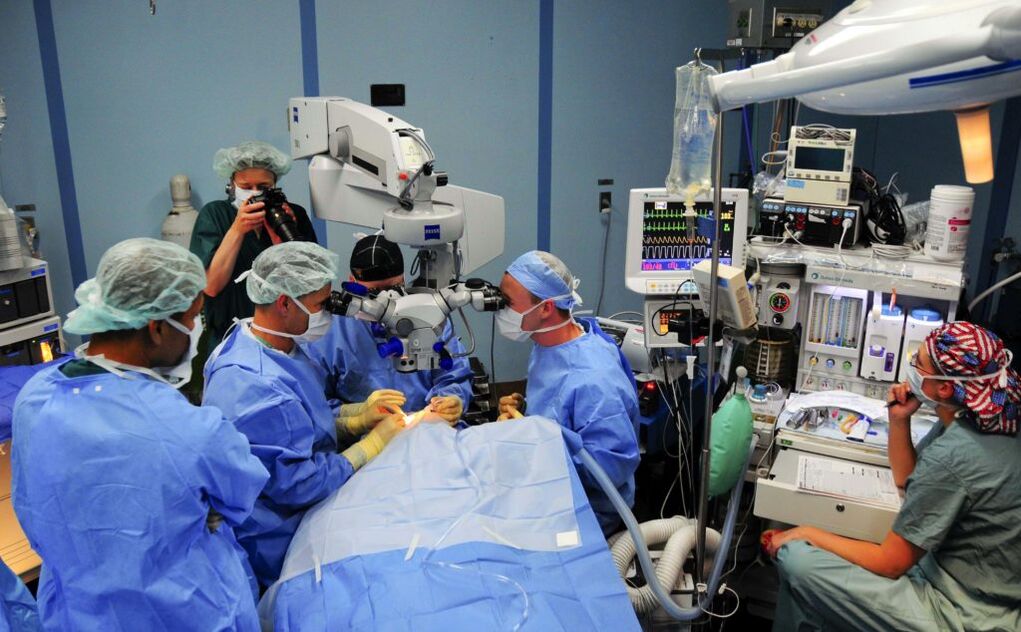
Indication
This procedure is prescribed after a comprehensive visual examination and all required diagnostic procedures.Any operation is a risk, so before advising surgery, doctors will try conservative treatment methods using drug therapy.Surgery is only prescribed if the drug does not provide the desired result.Indications for surgery:
- eye dysfunction;
- BELM formation in the cornea;
- Keratoconus;
- traumatic damage to the visual organs;
- Keratoglobus;
- Serious pathological changes in the organs.
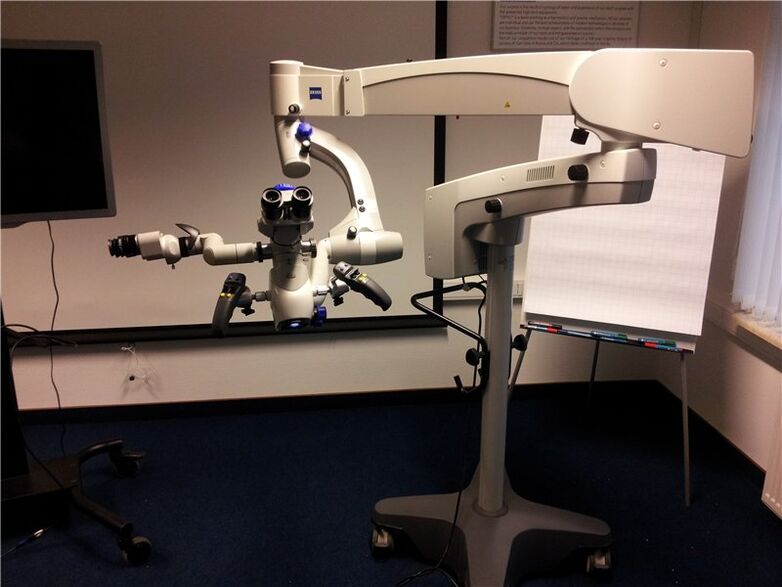
Type and behavior
Before surgery, need to undergo diagnostics, the doctor will voice the test list on the consultation.The method of visual correction is individually selected by each patient, they can be recommended to patients with cataracts, myopia, strabismus, halazion, glaucoma and other harmful deviations.During manipulation, eye specialists use modern medical equipment, interventions are carried out using microscope, vision coordinated through very small incisions.Because the operation is simple and low -traumatic, long hospitalization is not required.After 2-3 hours, the doctor explains in detail to the patient all the nuances of the recovery period, how to keep the eyes, and let's go home.This hospital is recommended only with serious pathology (retinal detachment, severe inflammation, penetrating wounds).There are such types of operations:
- laser surgery;
- vitrectomy;
- Trabekulectomy;
- Ltp, lie;
- Focoemulsification;
- scleroplasty;
- keratoplasty;
- Eye enucleases;
- replacement of refractive lenses;
- Crosslinking;
- Anti -hacomatous operation.
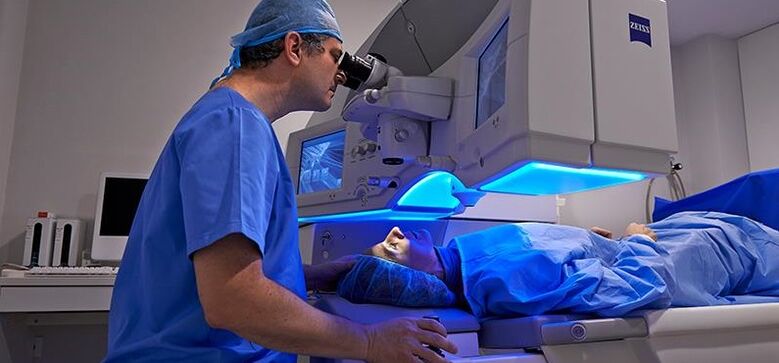
Correction of laser vision
Is operation for damage and retinal breakdown.Before agreeing, the patient must undergo a thorough examination.Falls that expand the students to drip before intervention.With the help of laser, the eyes are made by microsurgeri (weak tissue area of the dissolved tissue), this prevents the penetration of the fluid, and subsequently detachment.Retina laser freezing is simple, taking a few minutes in time, even if the children are well tolerated.
Operations take place under local anesthesia.During the recovery period, patients are recommended to leave active sports, bad habits, and physical burden.The negative consequences of laser vision correction can be clear in 3 hours - this is an increase in tears, photophobia, redness, discomfort and scrubbing.Doctors do not recommend this procedure under the age of 18.The percentage of vision recovery after laser correction is huge.
Keratoplasty
With irreversible pathological changes in the eyes, Okulists recommend this procedure.Operations to restore vision and eyes after injury consists of complete removal of pathologically altered cornea, which is later replaced by donors.There are many reasons for surgical intervention - they are keratoconus, severe damage to the eyeballs, EED, ulcerative changes caused by fungal infections, and genetic tendencies.In surgery, local anesthesia is used.Using the instrument, the doctor needs to remove the sick cornea and replace it with a healthy one, after which the stitch is used.Time takes about 2 hours.The recovery period is 1 year.The eyes are recommended to protect with the glass, this will prevent injury to the organ, complications after surgery.
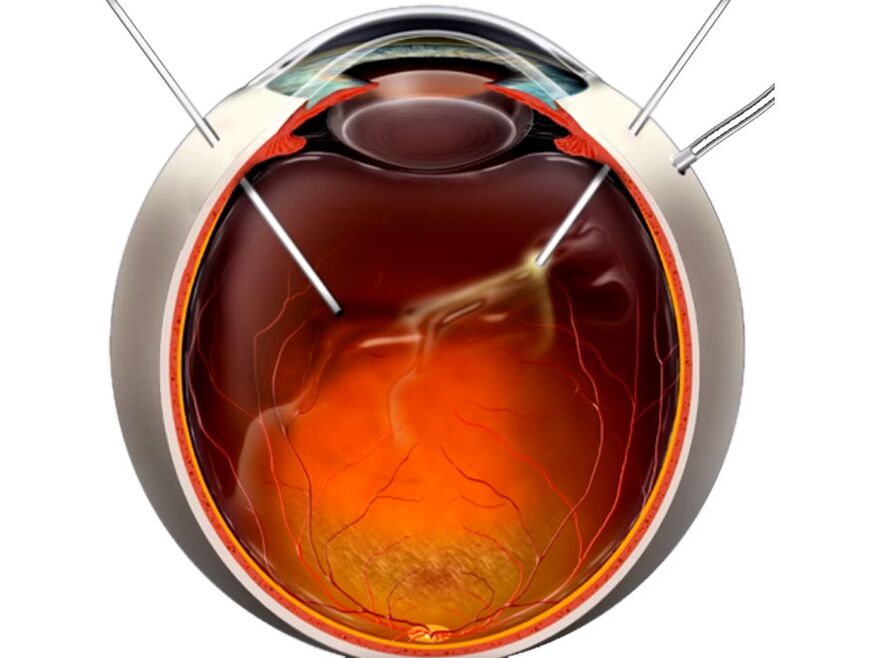
Vitrectomy
Make vision correction with vessels pathologically modified on the retina and when it is removed.Thanks to professional manipulation, the doctor will have access to the back of the eye.After removal, the vitreous body is replaced by the donor.Copy solutions, silicone oils, polymers and perfactor compounds are used as special fluids.In ophthalmology, vitrectomy is considered a micro -vasic methodology, disruption in the visual organ system is minimal, this contributes to the patient's return to the patient.With the help of this method, it is possible to restore the retinal structure, to prevent the development of pathology, the names of attractiveness and retinopathy.
Because the air is filled with many dust particles, to prevent infection after organ correction, it is necessary to wipe the eyes closely operated with the bandage for some time.
Anti -Hacomatous Operations
Eye surgery should be used if treatment with medication is not allowed, and only after complete examination.This type of intervention does not cause pain, it is made quickly, usually prescribed for the treatment of closed and open glaucoma, and when the vessel sprouts in the eyes.The essence of this procedure is to eliminate the accumulated fluid in the organs, it is carried out by the laser.The most effective methodology is considered not to highlight sclerectomy in.In the therapy process, the cornea layer interpreted surgically, thus reducing the increased intraocular pressure.As a result of the possibility of such operations can be expressed in the formation of scars, the eyes can initially be red.
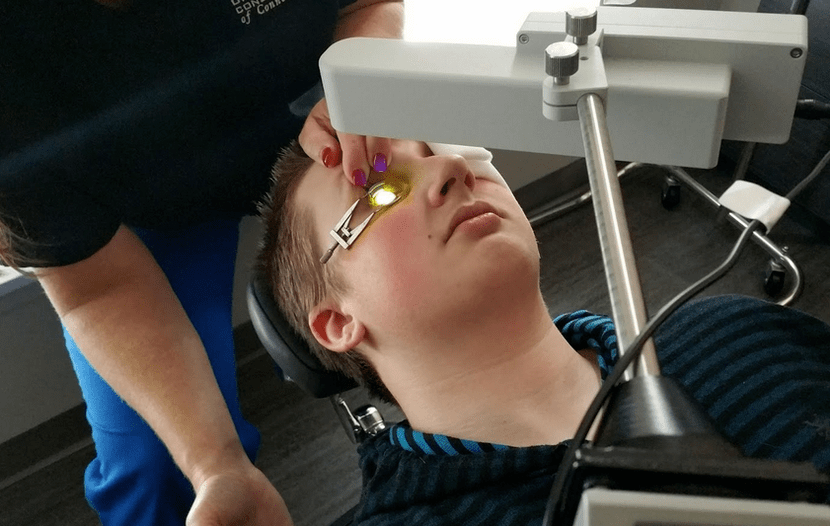
Crosslinking
A relatively new method of treating keratoconus, using it, can prevent the development of the disease early.Using a tool whose name is a boring light, and dripping vitamin B to the eye socket2, it is possible to strengthen the cornea and stabilize the patient's condition.The addition of the procedure is that manipulation is done only once, 1 hour is enough to do it.After reducing the risk of injury, a special protective lens is placed on the eyeball.
The eye enucleas
This is a complex surgical operation, it is only prescribed in extreme cases, if the organ cannot be stored in different ways.The eyes are completely removed from the socket, and the glass fiber prosthesis is planted in place, it will look like real.When performing, side effects may develop, this is an unexpected inflammatory process and implant displacement.The testimony includes pathology such as:
- Glaucoma to a terminal degree;
- the appearance of pain and the development of inflammation in the blind organs;
- Serious injuries and neoplasms.
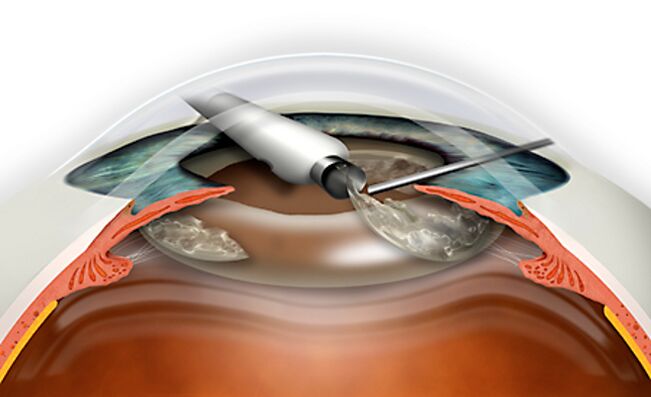
Replacement of refractal lenses
During surgery, damaged elements of the visual system with artificial systems occur.When choosing intraocular lenses, the individual characteristics of the patient are taken into account (age, gender).This procedure lasts for 25 minutes, local anesthesia is used, surgical manipulation occurs without blood.Through microdnaras, using ultrasound, the lens turns into an emulsion and removed from the eyes.Replacement replacement is made with pathology such as:
- carrying out myopia and hypercope;
- Presbyopia;
- Prohibition of laser correction;
- High hypercents, which can cause glaucoma;
- Violations of refraction and loss of quick visual function.
Eximerlazer's vision correction
Surgical intervention is recommended for eye pathology such as strabismus, astigmatism, far.There are several ways to perform, this is Femo Lasik, the Federal Republic of Criminal Code, Lasik.Doctors cut off the top layer of the cornea, the curvature changes using excess laser beam, preferably using local and normal anesthesia -just.After eximerlazer correction, the patient eliminated the problem, as the procedure was 99%effective, ahead of other interventions.The unsuccessful operation leads to hyper, causing redness, and the cornea layer appears to be inflamed.
The correction of strabismus
Eye surgery for strabismus is intended to correct organ symmetry.Surgical intervention is divided into two types: this is an improvement in the muscles responsible for the movement of the visual organs and the release of the oculomotor muscle.In the first case, part of the muscle system, as well as anti -cancel and tenorafia, is stored, both of them changing the place of muscle fasteners, extending them with plastic.What methods to be turned on, the surgeon decides, given the individual factors and the degree of pathological severity.
Scleroplasty
Doctors recommend referring to this type of intervention with uncontrolled development of myopia.Using the methodology, strengthening and stabilizing the patient's condition, stopping vision loss.Scleroplasty is shown to children and adolescents at the age of 17 during the active growth period, with eye pathology such as rapid myopia.
After removing the eyes in the early days, the patient may experience severe pain, in this case, you should consult your doctor and choose the right analgesic.
The removal of the formation
This type of surgical intervention is shown for halazium, conjunctiva and ptergium cyst neoplasms.Holding the growth with the pinsets, the doctor cut it further to eliminate the negative consequences, the wound was canceled.To prevent infection, antibiotic ointment is used on the eyelids, and sterile bandages are used.The downside is that the disease can develop again, in this case, returning to this method of therapy is inevitable.
Cataract removal
During microsurgery, pathologically changed lenses, therapy is performed using laser and ultrasonic phacoemulsification.Special surgical devices through micronads are diminished and removed from the eyes, replaced with artificial.Occasionally they perform a procedure called intra tersular and extracapsular extraction.




















